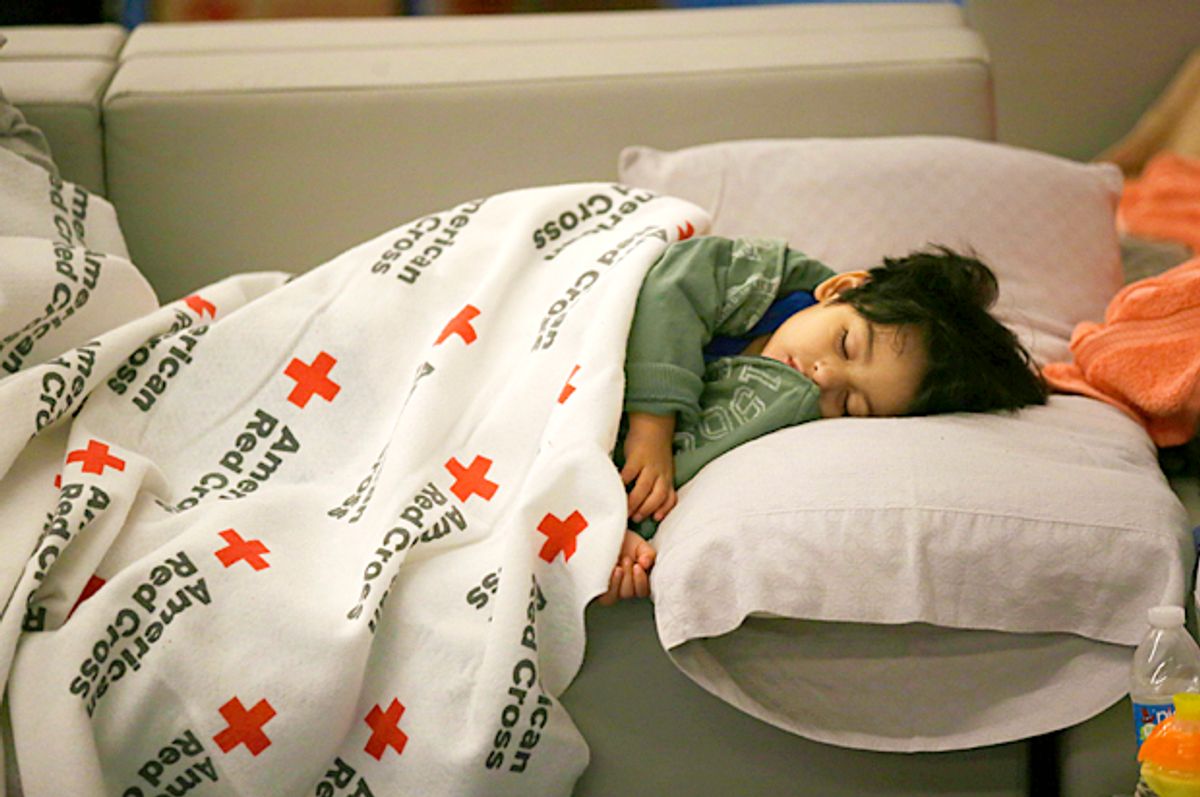Many Americans want to help the people suffering from recent natural disasters in the U.S. and elsewhere.
There’s no shortage of media reports listing groups that are taking these donations, which may ultimately total billions of dollars. But how can you make the most of your contributions?
Having researched giving in the wake of disasters and taught students how to be effective philanthropists, I’ve learned that it’s hard to make good decisions regarding donations — especially when there are many urgent needs and countless ways to spend charitable dollars.
Here are some best practices you may want to consider before you contribute.
Give money, not goods
The ideal way to show your compassion is to donate money to a charity that you respect rather than shipping cartons of diapers and cases of canned chili.
It’s easy to think of disasters in personal terms: “What if it were me or my family?” and picture what you’d need if you suddenly became homeless: clothes, food or toys. But goods given during emergencies often go to waste. Giving these things may make you feel like you’re making a real difference, but they can even do more harm than good when they interfere with disaster response efforts.
Besides, you aren’t likely to know what people on the (drenched) ground need.
Donate to organizations operating on the scene
But where should you send that money? It’s generally a good idea to support groups operating in the midst of the disaster. They can give money and other aid to the people who need it directly.
But first, do your homework to learn about an organization’s past performance. Established organizations are usually your best bet because they are the most apt to have staff, experience, infrastructure and roots in affected communities. National organizations like the Red Cross and the Salvation Army have long track records in disaster response — albeit with some baggage.
To give locally, support groups firmly rooted in the affected area. Most American cities have United Way chapters and community foundations. After disasters these organizations typically raise money for relief work and make an effort to direct donations to where the funds are most needed. In the aftermath of both Hurricanes Harvey and Irma, United Way Worldwide has established funds to support relief efforts in Texas and Florida.
Similarly, community foundations based in Houston, Beaumont, Texas and Miami have established relief funds. These organizations have a long history of service to their local communities.
Sadly, many people outside the United States are also suffering from recent disasters. Not only has Hurricane Irma ravaged the Caribbean, but Mexico experienced its largest earthquake in a century, which also caused damage in Guatemala. The death toll is nearing 100, yet it has garnered scant attention in the U.S.
The earthquake as well as floods and landslides in Bangladesh and other South Asian countries also require disaster relief. Established international organizations such as UNICEF and Americares are seeking donations to support those efforts.
Consider long-term priorities
Photos and video clips of streets transformed into rivers, stranding residents, can create an urge to make a difference immediately. But, as previous disasters like Superstorm Sandy and Hurricane Katrina showed, the needs are sure to mount. That’s why more than one in four organizations created after 9/11 was still providing relief five years later.
Be mindful that people in afflicted areas throughout Texas, Florida, Mexico, Guatemala, the Caribbean and South Asia will need our money long after recent disasters stop making headlines. Your donation may matter six months or even years from now as much as it does today. Nonetheless, donation forms may offer you the option to indicate how you want your contribution used – including having it spent right away if you feel strongly about it.
Maximize the speed and size of your gift
Many nonprofits are encouraging people to donate by sending texts, an approach that may seem like the fastest way to give.
But wireless companies tend to wait until you officially cover the donation’s cost — by paying your bill — before passing that money along to the charity. That can delay payments by weeks or even months.
If getting your money to Jacksonville, Florida or another community fast is your top concern, make online donations with a credit card or a debit card. Even “a check in the mail” would transmit funds faster than texting, says Brian Mittendorf, who teaches accounting at the Ohio State University Fisher College of Business.
Mittendorf also cautions that giving through crowdfunding can mean that intermediaries skim fees that might otherwise go to disaster relief or another cause you support. Credit card companies also usually collect transaction fees.
In short, being an informed donor is the best way you can start to make a difference for the people who have lost their homes, cars and more.
![]() Editor’s note: This is an updated version of an article originally published on Aug. 30, 2017.
Editor’s note: This is an updated version of an article originally published on Aug. 30, 2017.
David Campbell, Associate Professor of Public Administration, Binghamton University, State University of New York

Shares